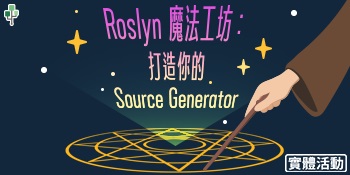ASP.NET MVC3 自訂驗證規則 增加一個不等於的驗證(使用 addMethod )
- 2011-07-18
- 20223
- 0
- ASP.NET MVC3 驗證介紹實作與擴充
- 版本
- 3
此篇是自訂擴充驗證的最後一篇,先來說說什麼叫做「不等於驗證」此驗證就是和內建的 Compare 剛好相反,您可以自訂某一欄位的值不能與另一個欄位相同,應用層面也滿廣的,比如有個欄位要輸入親子關係,那A姓名就不能等於B姓名,而且這次介紹的是彈性最高的 addMethod 所以如果你有什麼很神奇的想法,這篇就是一定要學會的。
![]() 一樣一開始就建立一個自訂的驗證規則出來吧,這次名稱就取為「NotequalToAttribute」
一樣一開始就建立一個自訂的驗證規則出來吧,這次名稱就取為「NotequalToAttribute」

/// <summary>
/// 兩個欄位不能相等
/// </summary>
public sealed class NotEqualToAttribute : ValidationAttribute, IClientValidatable
{
/// <summary>
/// Gets the other property.
/// </summary>
public string OtherProperty { get; private set; }
/// <summary>
/// Initializes a new instance of the <see cref="NotEqualToAttribute"/> class.
/// </summary>
/// <param name="otherProperty">要比對的屬性名稱</param>
public NotEqualToAttribute(string otherProperty)
{
OtherProperty = otherProperty;
}
/// <summary>
/// 根據目前的驗證屬性,驗證指定的值。
/// </summary>
/// <param name="value">要驗證的值。</param>
/// <param name="validationContext">有關驗證作業的內容資訊。</param>
/// <returns>
/// <see cref="T:System.ComponentModel.DataAnnotations.ValidationResult"/> 類別的執行個體。
/// </returns>
protected override ValidationResult IsValid(object value, ValidationContext validationContext)
{
var property = validationContext.ObjectType.GetProperty(OtherProperty);
if (property == null)
{
return new ValidationResult(
string.Format(
CultureInfo.CurrentCulture,
"{0} 不存在",
OtherProperty
)
);
}
var otherValue = property.GetValue(validationContext.ObjectInstance, null);
if (object.Equals(value, otherValue))
{
return new ValidationResult(FormatErrorMessage(validationContext.DisplayName));
}
return null;
}
/// <summary>
/// 在類別中實作時,傳回該類別的用戶端驗證規則。
/// </summary>
/// <param name="metadata">模型中繼資料。</param>
/// <param name="context">控制器內容。</param>
/// <returns>
/// 此驗證程式的用戶端驗證規則。
/// </returns>
public IEnumerable<ModelClientValidationRule> GetClientValidationRules(ModelMetadata metadata, ControllerContext context)
{
var rule = new ModelClientValidationRule
{
ErrorMessage = FormatErrorMessage(metadata.GetDisplayName()),
ValidationType = "notequalto",
};
rule.ValidationParameters["other"] = OtherProperty;
yield return rule;
}
}
這次有幾點比較不一樣,首先在第27行的時候,我們多傳入了一個「ValidationContext validationContext」參數,因為傳入了它,我們才可以利用反射去取得指定的欄位是否存在(指定欄位的時候使用弱型別所以少了這驗證就很容易發生拼錯、打錯而導致欄位不存在的錯誤),驗證存在後再利用反射取得輸入的值來做比對驗證。
![]() 再來為了符合情境,我們要在「AccountModels.cs」內的「RegisterModel」新增屬性並且加上驗證
再來為了符合情境,我們要在「AccountModels.cs」內的「RegisterModel」新增屬性並且加上驗證
[NotEqualTo("UserName", ErrorMessage = "介紹人與Username不能相同")]
[Display(Name = "介紹人")]
public string Introducer { get; set; }
在本範例的設定是不可以輸入和 username 欄位的值相同
![]() 來到 View 增加以下 Code
來到 View 增加以下 Code
<div class="editor-label">
@Html.LabelFor(m => m.Introducer)
</div>
<div class="editor-field">
@Html.TextBoxFor(m => m.Introducer)
@Html.ValidationMessageFor(m => m.Introducer)
</div>
![]() 接者擴充 js
接者擴充 js
<script type="text/javascript">
jQuery.validator.addMethod('notEqualTo', function (value, element, param) {
return this.optional(element) || value != $(param).val();
});
jQuery.validator.unobtrusive.adapters.add(
'notequalto', ['other'], function (options) {
options.rules['notEqualTo'] = '#' + options.params.other;
if (options.message) {
options.messages['notEqualTo'] = options.message;
}
});
</script>
![]() 編譯過後再測試就可以看到效果了
編譯過後再測試就可以看到效果了

![]() 到目前為止前端驗證的擴充已經介紹完畢了,如果您還有什麼不是很瞭解用法的地方其實直接打開專案中的【jquery.validate.unobtrusive.js】檔案從第188行到第261行就有很明確的說明,相當的好上手,如果你有心想把 ASP.NET MVC3 寫好的話寫一套自己的驗證規則擴充是必須的,擴充的方法如您所見並不困難而且效果很好,如果在擴充的時候有什麼問題的話歡迎留言詢問,剩下的系列文大約剩下兩篇,有關於一些技巧的應用 demo 會盡量早點發出來的
到目前為止前端驗證的擴充已經介紹完畢了,如果您還有什麼不是很瞭解用法的地方其實直接打開專案中的【jquery.validate.unobtrusive.js】檔案從第188行到第261行就有很明確的說明,相當的好上手,如果你有心想把 ASP.NET MVC3 寫好的話寫一套自己的驗證規則擴充是必須的,擴充的方法如您所見並不困難而且效果很好,如果在擴充的時候有什麼問題的話歡迎留言詢問,剩下的系列文大約剩下兩篇,有關於一些技巧的應用 demo 會盡量早點發出來的 ![]()








 Roslyn 魔法工坊:打造你的 Source Generator [2025-12-20]開課 共7H
Roslyn 魔法工坊:打造你的 Source Generator [2025-12-20]開課 共7H
留言討論
目前還沒有留言,歡迎留下您的意見。
發表留言